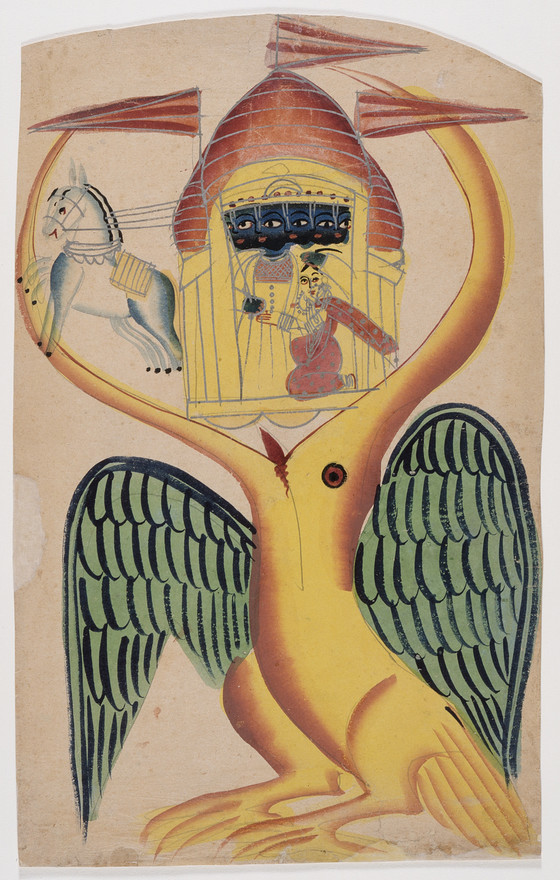Jatayu's Attempt to Foil Sita's Abduction, Folio from a Vaidehisha Vilasa (The Story of Sita)

Please log in to add this item to your gallery.
View comments
No comments have been posted yet.
Add a comment
Please log in to add comments.
Please log in to add tags.
* Nearly 20,000 images of artworks the museum believes to be in the public domain are available to download on this site.
Other images may be protected by copyright and other intellectual property rights.
By using any of these images you agree to LACMA's Terms of Use.
Jatayu's Attempt to Foil Sita's Abduction, Folio from a Vaidehisha Vilasa (The Story of Sita)
India, West Bengal, Kolkata (Calcutta), Kalighat, circa 1850-1900
Drawings; watercolors
Opaque watercolor on paper with polished tin accents
17 3/8 x 10 3/4 in. (44.13 x 27.31 cm)
Purchased with funds provided by Christian Humann and David H. Schultz (M.86.118.2)
Not currently on public view


